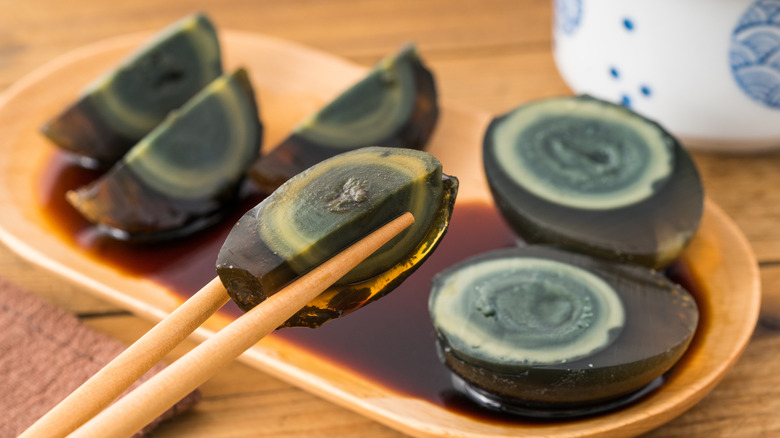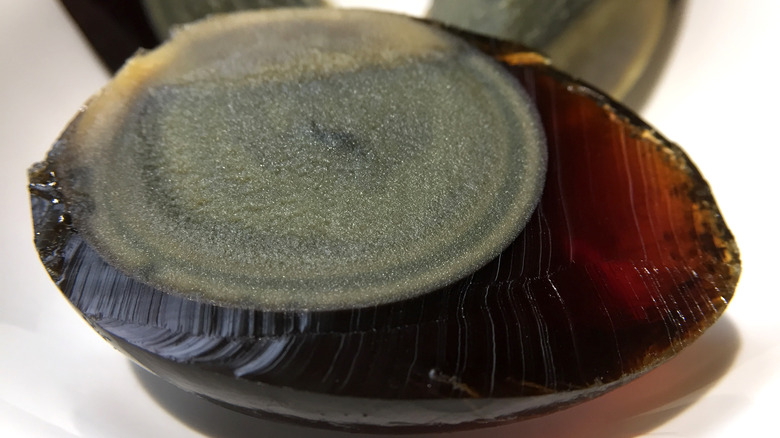Here's What You Should Check Before Eating A Century Egg
Why is it that some delicacies found around the world come off as so... unappealing? There's casu marzu, which is literal maggot cheese (why would anyone eat this?!), balut, a fertilized duck egg eaten as a late-night snack, and hákarl, shark fermented in ammonia.
Perhaps among these we should include the century egg, which is essentially a rotten egg that someone treated with a little extra TLC. A century egg, also known as the "hundred-year egg" is one of those delicacies that are only for the truly committed.
Much like some other "delicacies" around the world, you might want to know what you're getting into before you opt to try this. According to ThoughtCo, "century eggs are made by storing raw [duck] eggs for a few months in a mixture of wood ash, salt, lime, and maybe tea with rice straw or clay." Sometimes, though, chemicals are added to accelerate the curing process.
Make sure it doesn't have this in it
If you're buying your century egg from a store that carries them, there are probably a few added ingredients that aren't mentioned on the list. Namely, century eggs sometimes contain lye or sodium hydroxide (per ThoughtCo), but these are still okay to eat, even though it may sound scary.
The real problems arise when lead oxide is used to accelerate the curing process in century eggs. As ThoughtCo writes, "This hidden ingredient is most likely going to be found in eggs from China, where the faster method of preserving the eggs is more common."
The best way to make sure you're not accidentally ingesting this poisonous compound is to look for packages the explicitly say the eggs were made without lead oxide. According to Smithsonian, sometimes copper sulphate sneaks into these eggs, too. ThoughtCo also mentions that it's probably best to avoid century eggs made in China altogether, as the labeling can sometimes be inaccurate and they may have lead in them even if it's not mentioned on the label.

